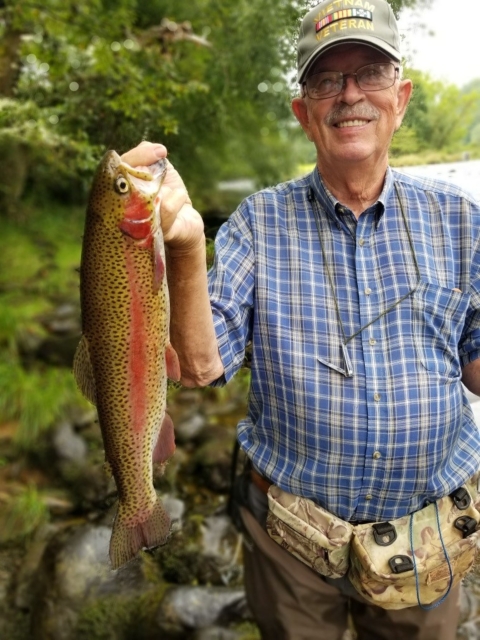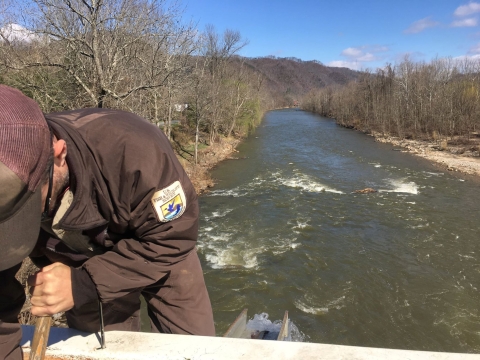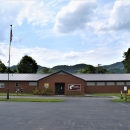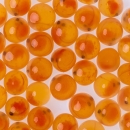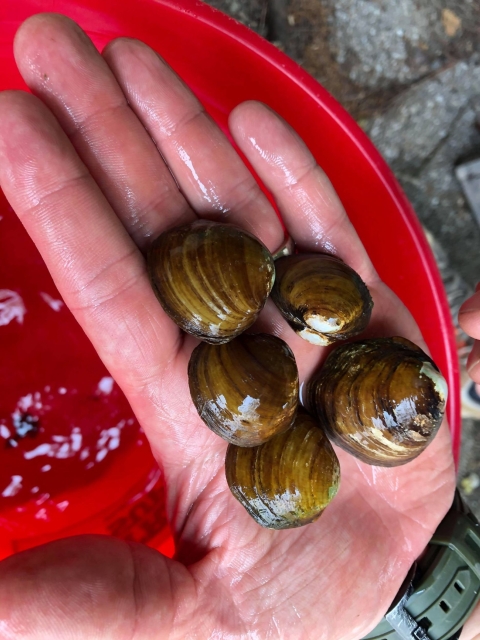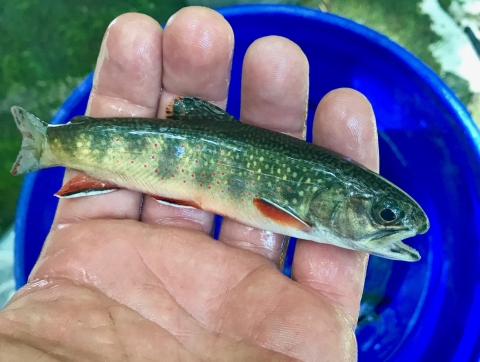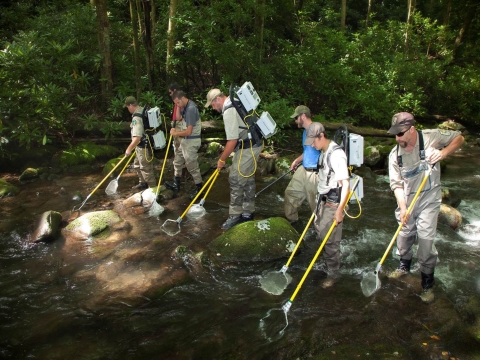What We Do
Erwin National Fish Hatchery produces millions of high quality trout eggs each year to support recreational fishing around the country. We manage several trout broodstocks and research their behaviors and performance to continually produce a better product for the American public. In addition to trout we work with other fish species and other taxon like mussels and crayfish to aid in the recovery of imperiled species across the Southeastern United States
Management and Conservation
The next time you go fishing, you might just catch a fish that was raised at Erwin National Fish Hatchery Hatchery. Since 1871, National Fish Hatcheries have been responding to conservation challenges affecting America’s fish and other aquatic species. Producing fish continues to be an irreplaceable tool in managing or restoring fisheries along with habitat conservation. In doing so, we help provide recreation opportunities to America’s 34 million anglers who spend $36 billion annually in pursuit of their favored pastime.
Erwin National Fish Hatchery produces Rainbow and Brook trout. The fish are stocked in reservoirs, lakes, rivers across the Southeast.
The reproductively mature adults in a population that breed (or spawn) and produce more individuals (offspring or progeny).
Learn more about broodstock trout into the Nolichucky River
Erwin NFH is involved in assisting partners with the recovery of declining populations of Southern Appalachian brook trout, freshwater mussels, and lake sturgeon.
Our Services
Established in 1897 by the U.S. Fish and Wildlife Service, Erwin National Fish Hatchery produces approximately 16 million disease-free eggs annually from three strains of rainbow trout and one strain of brook trout broodstock broodstock
The reproductively mature adults in a population that breed (or spawn) and produce more individuals (offspring or progeny).
Learn more about broodstock . These eggs are shipped to other Federal, State and Tribal hatcheries to support fishery management efforts. The station also provides eggs to research centers, classrooms, and universities. Broodstock operations are performed in a manner that will preserve or optimize the genetic diversity of hatchery fish. In addition, Erwin NFH is part of long term efforts to restore populations of Southern Appalachian Brook trout and freshwater mussels.
Our Projects and Research
National Fish Hatcheries rear fish and other aquatic species – like crayfish and mussels - to help restore and sustain important populations for the benefit of the American people. Freshwater mussels play very important roles in our rivers and lakes by filtering the water and creating habitat for fish and aquatic insects fish like to eat. With declining fish and freshwater mussel populations becoming prevalent across the world, fish hatchery operations are more important now than ever.
Erwin National Fish Hatchery has worked closely with multiple partners to assist in the recovery of multiple freshwater mussel species. Some of those species include the Appalachian Elktoe, Round Hickorynut, and the Snuff box mussel.
Erwin NFH is also an active partner in the recovery of the Southern Appalachian Brook Trout.
Erwin NFH participates in lake sturgeon research every year, assisting other agencies with measuring, weighing, and tagging the fish.
Erwin NFH participates in annual stream surveys, assisting with capturing, identifying, and collecting data of stream fish.


